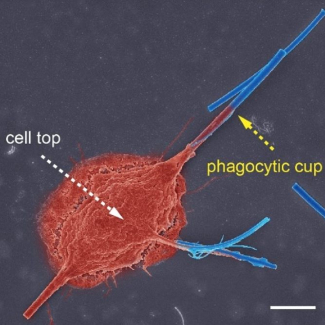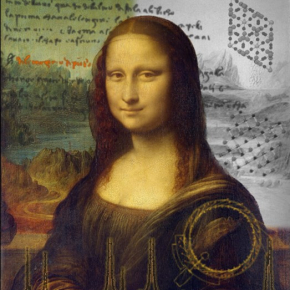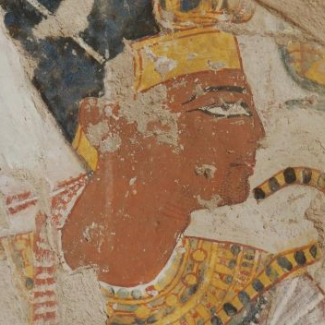
Mona Lisa catches the eye of chemists
The mystery of the Mona Lisa lies not so much in her smile as in the painting techniques used by Leonardo da Vinci. Artist, engineer and architect, da Vinci was also an experimental chemist, with the Mona Lisa being his veritable laboratory. A team1 , led by scientists from the CNRS, involving the Synchrotron Radiation Facility (ESRF), the Musée du Louvre and the Ministère de la culture, studied an exceptional microsample of the masterpiece’s preparatory undercoat (carried out on a microscopic scale using synchrotron radiation) and revealed a singular mixture of leaded oil very different to that usually observed in oil paintings from this period. The presence of a rare and unstable compound – plumbonacrite – also found on fragments of da Vincis’s mural masterpiece The Last Supper, suggests a desire to innovate with the preparation of thick, opaque undercoats treated with a large amount of lead oxide. Although the artist’s manuscripts hint at these practices, this study, to be published in JACS on October 11, 2023, provides new key elements for understanding da Vinci’s recipes and the evolution of his paintings over time.
- 1The Laboratoire photophysique et photochimie supramoléculaires et macromoléculaires (CNRS/ENS Paris-Saclay), the Institut de recherche de chimie Paris (CNRS/Chimie ParisTech – PSL), the Centre de recherche et de restauration des musées de France (Ministère de la culture), the European Synchrotron Radiation Facility (ESRF), the Musée du Louvre and the Laboratoire d’archéologie moléculaire et structurale (CNRS/Sorbonne Université).
X-ray and infrared micro-analyses of Mona Lisa’s ground layer and significance regarding Leonardo da Vinci’s palette. Victor Gonzalez, Gilles Wallez, Elisabeth Ravaud, Myriam Eveno, Ida Fazlic, Tiphaine Fabris, Austin Nevin, Thomas Calligaro, Michel Menu, Vincent Delieuvin and Marine Cotte.
DOI: https://pubs.acs.org/doi/10.1021/jacs.3c07000

